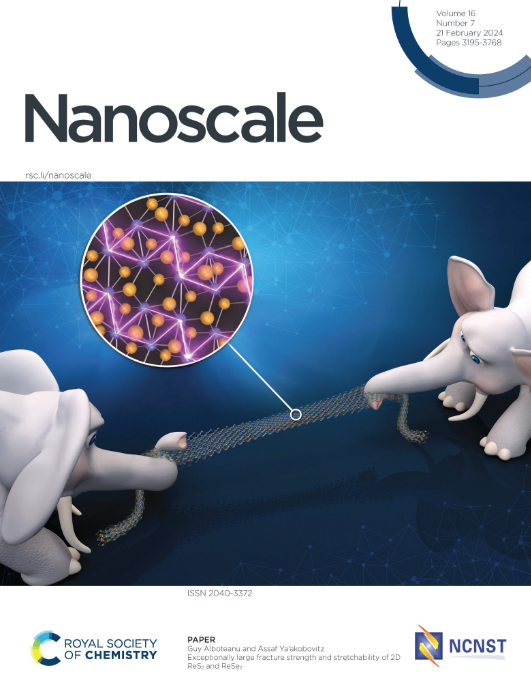Alternate InP Synthesis with Aminophosphines: Solution-Liquid-Solid Nanowire Growth
IF 5.8
3区 材料科学
Q1 CHEMISTRY, MULTIDISCIPLINARY
引用次数: 0
Abstract
Indium phosphide nanowires are important components in high-speed electronics and optoelectronics, including photodetectors and photovoltaics. However, most syntheses either use high-temperature and costly vapor-phase methodology or highly toxic and pyrophoric tris(trimethylsilyl)phosphine. To expand on the success of the aminophosphine-based InP colloidal quantum dot synthesis, we developed a synthesis for thin (~11 nm) zincblende InP nanowires at 180 °C using indium tris(trifluoroacetate) and tris(diethylamino)phosphine. A flat nanoribbon morphology was identified by transmission electron and atomic force microscopy analysis, with the stoichiometric (110) lattice plane exposed. Nanowire growth proceeded through a solution-liquid-solid mechanism from in situ-formed indium metal nanoparticles. Molecular byproducts of tris(oleyl)aminophosphine oxide and N-oleyltrifluoroacetamide observed by 31P and 19F NMR spectroscopy inform a proposed mechanism of indium reduction by the aminophosphine. Morphological control over the nanowire product was achieved by varying the phosphorus injection to control the aspect ratio, the In:P ratio to toggle between nanowires and multipods, and the pre-hot injection evacuation step to favor a quantum dot product. Replacing the indium precursor with indium tris(trifluoromethanesulfonate) was found to make bulk zincblende InP nanowires with an average diameter of >250 nm and tens of microns in length.求助全文
约1分钟内获得全文
求助全文
来源期刊

Nanoscale
CHEMISTRY, MULTIDISCIPLINARY-NANOSCIENCE & NANOTECHNOLOGY
CiteScore
12.10
自引率
3.00%
发文量
1628
审稿时长
1.6 months
期刊介绍:
Nanoscale is a high-impact international journal, publishing high-quality research across nanoscience and nanotechnology. Nanoscale publishes a full mix of research articles on experimental and theoretical work, including reviews, communications, and full papers.Highly interdisciplinary, this journal appeals to scientists, researchers and professionals interested in nanoscience and nanotechnology, quantum materials and quantum technology, including the areas of physics, chemistry, biology, medicine, materials, energy/environment, information technology, detection science, healthcare and drug discovery, and electronics.
 求助内容:
求助内容: 应助结果提醒方式:
应助结果提醒方式:


